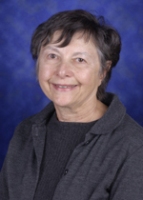
Wayne State University School of Medicine researchers believe medical practitioners can help reduce the number of breast cancer deaths among low-income African-American women by more effectively educating patients about the importance of mammography screening.
In a study published this month in the Journal of Cancer Education, Rosalie Young, Ph.D., associate professor; Kendra Schwartz, M.D., M.S.P.H., interim chair; and Jason Booza, Ph. D., assistant professor, all from the Department of Family Medicine and Public Health Sciences, examined clinical, structural and personal barriers known to prevent such women from having mammograms. Overcoming those barriers is important, the researchers said, because of higher mortality rates for black women. In 2007, Detroit statistics showed a rate of approximately 35 deaths per 100,000 among black women versus about 26 deaths per 100,000 for white women.
Between 2004 and 2007, WSU researchers randomly surveyed 178 black women 40 or older from a high cancer-risk area of Detroit. They found that all three barrier types were strongly associated with a lack of breast cancer screening.
Dr. Young said, however, that interventions to increase mammography utilization often focus on structural barriers, which include lack of health insurance or lack of medical care facilities in low-income areas. Removing those barriers is difficult, she said, because it requires systemic change.
The study brings good news, however, by showing that medical care providers are capable of removing some clinical and personal barriers. Dr. Young said the study also could serve as a springboard for future analyses of particular barrier combinations to determine which predict whether women will undergo mammograms.
One clinical barrier is that fewer board-certified physicians work in lower-income areas. Providers in those areas often are less informed about preventive care or less likely to adhere to cancer screening recommendations. Additionally, time constraints may limit patient education efforts, leading to inadequate recommendations for screening, and physician-patient interaction may be culturally or educationally inappropriate for lower-income or minority populations.
To help break down those barriers, along with personal barriers such as patients' fear, or their lack of trust or knowledge, Dr. Young said clinicians could be more proactive in communicating with patients to build trust. They also can offer more culturally appropriate health education that includes general information about disease risk and the importance of breast cancer screening, as well as more education about patients' personal breast cancer risk, such as genetic information and specific family history risk.
Clinicians also can make referrals specifically for mammograms, she said, as black women often expect them to initiate such conversations.
"The physician-patient interaction is extremely important," she said. "Physicians are not only gatekeepers to services; they also can motivate their patients."
Part of what may hinder such interaction now, Dr. Young said, is that practitioners in facilities serving low-income patients may be under too much pressure simply to see patients. "There may be a desire on the part of the physician to be more involved with their patients in terms of educating and communicating with them," she said, "but the constraints of their situation may be limiting their ability to do that."
Still, more proactive practitioners can make a real difference. "African-American women are more likely to have a basal-like subtype of breast cancer that is harder to treat and should be detected early," Dr. Young said. "Health providers have an excellent opportunity to reduce mortality by emphasizing the importance of screening."